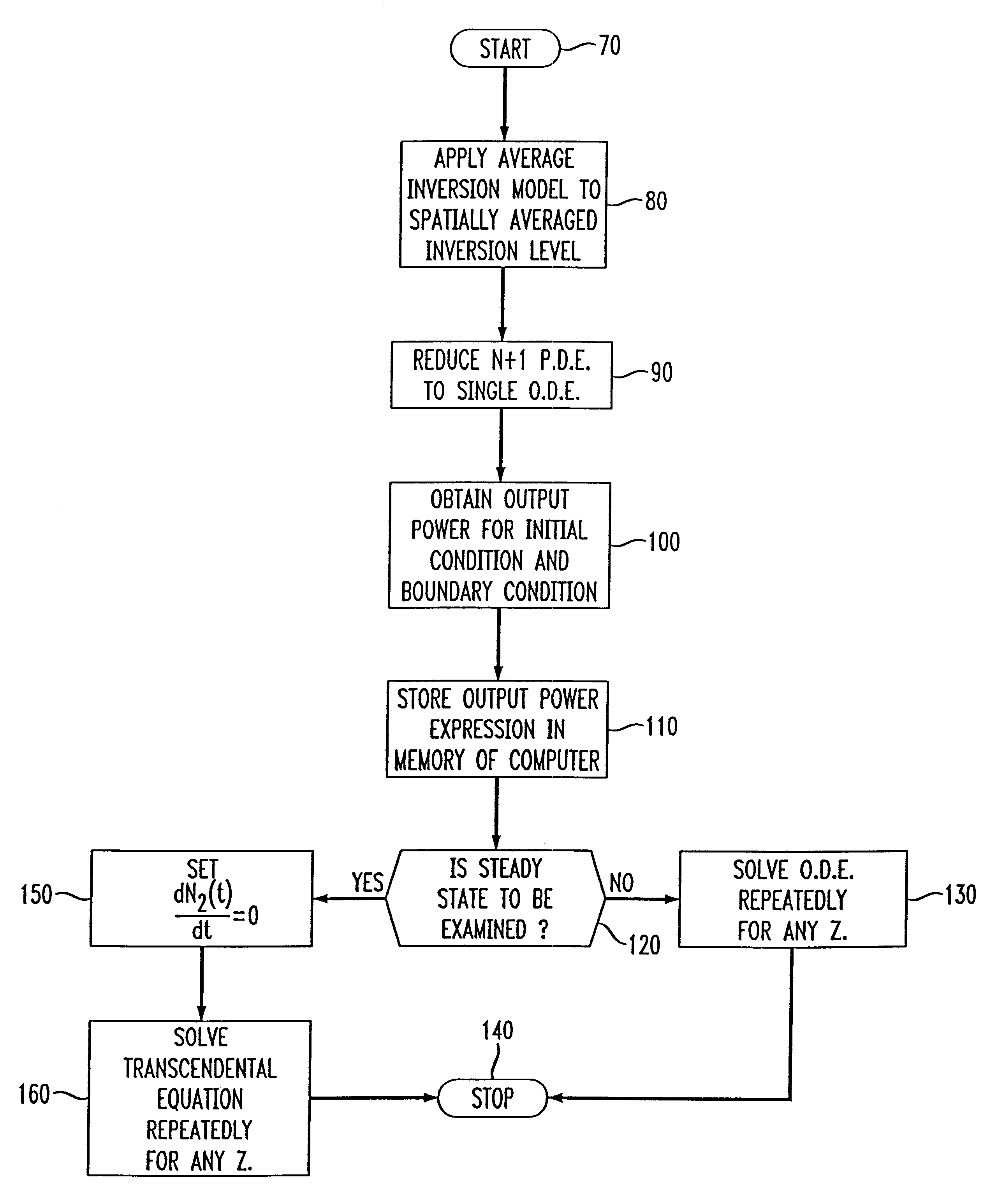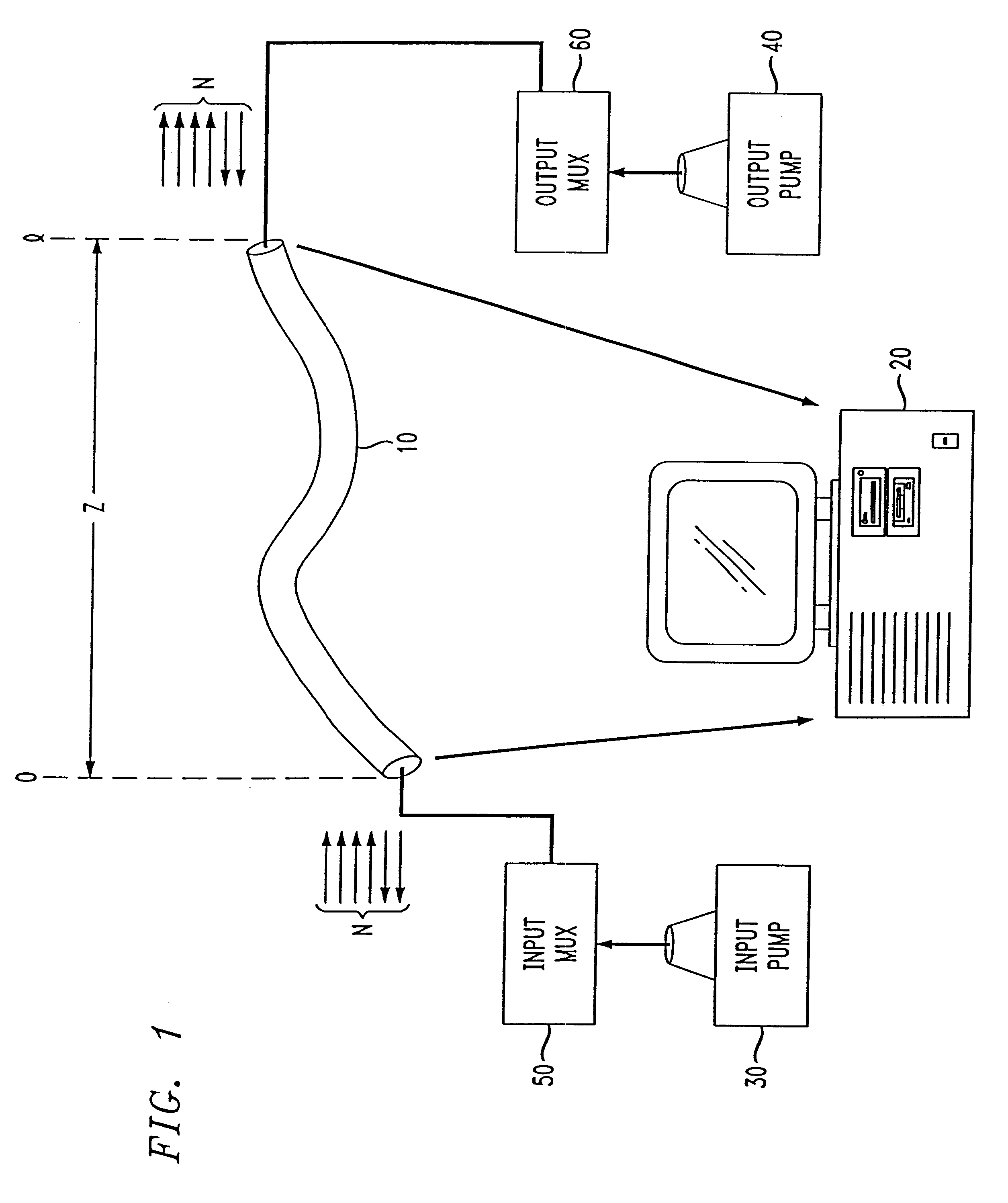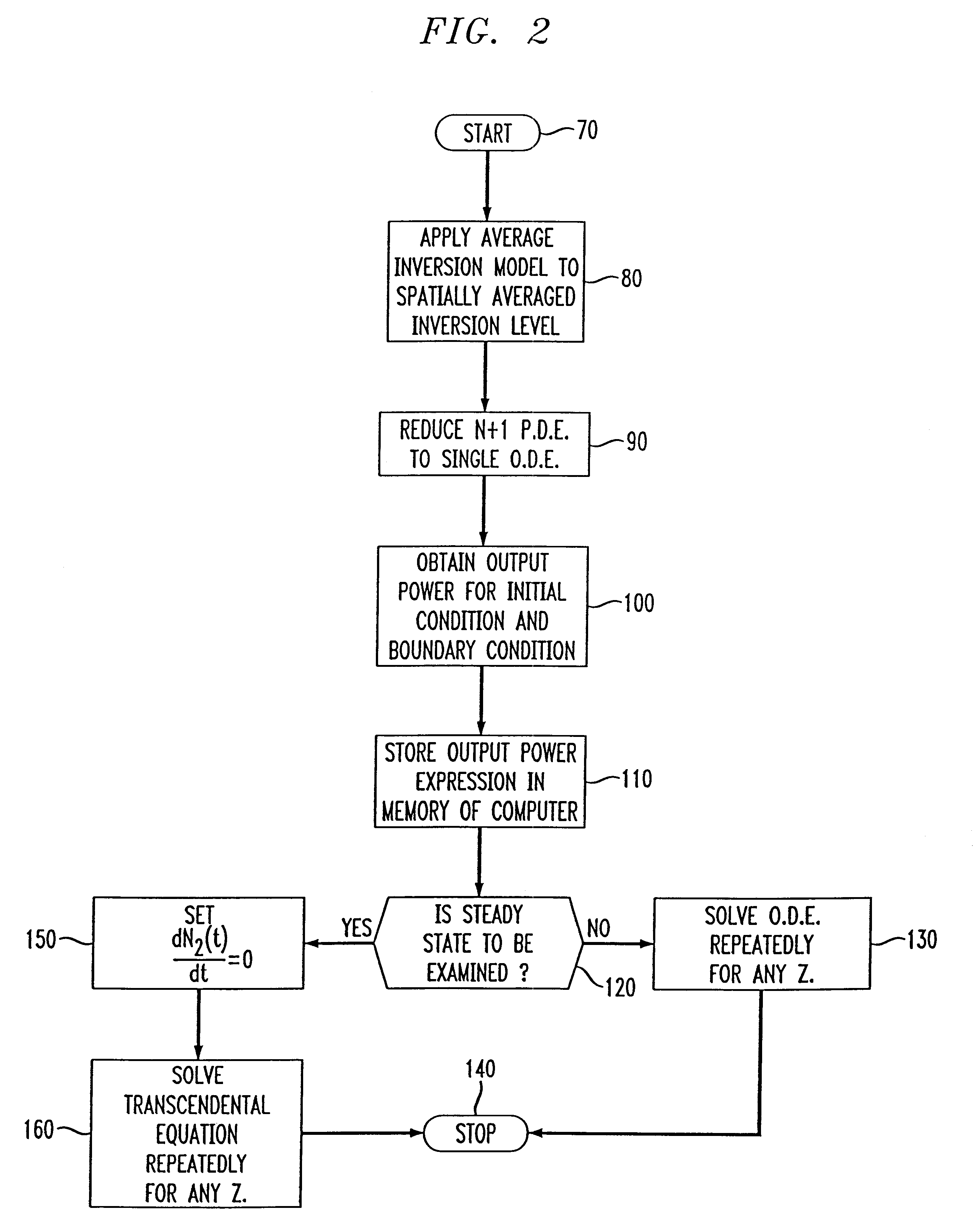Methods of modeling erbium doped fiber amplifiers
a technology of erbium doped fiber and amplifier, which is applied in the direction of instruments, optical elements, active medium materials, etc., can solve the problems of complex wdm system, high loss and high dispersion, and difficult and costly upgrades
- Summary
- Abstract
- Description
- Claims
- Application Information
AI Technical Summary
Problems solved by technology
Method used
Image
Examples
Embodiment Construction
Referring now to FIG. 1, a section of EDF 10 will in the following description and by way of illustrative example be modeled in accordance with the invention using a general purpose digital computer 20. EDF section 10 has a fixed length l which will allow propagation of a plurality of channels N in the direction z of length l. In order to model EDF 10, it is assumed that EDF 10 is pumped with an input coherent source 30, such as a laser, at a first wavelength, and is pumped at the output with an output coherent source 40, such as a laser, at a second frequency. At the transmitter side, an input multiplexer 50 multiplexes the input pumped laser signal to create the N channels and, on the output side, an output multiplexer 60 performs a similar function. The multiplexing may be WDM, DWDM, or any particular multiplexing scheme as appropriate or desired.
EDF 10 comprises a silica fiber which has a core that is doped with erbium atoms that maintain a metastable state when pumped by the la...
PUM
 Login to View More
Login to View More Abstract
Description
Claims
Application Information
 Login to View More
Login to View More - R&D
- Intellectual Property
- Life Sciences
- Materials
- Tech Scout
- Unparalleled Data Quality
- Higher Quality Content
- 60% Fewer Hallucinations
Browse by: Latest US Patents, China's latest patents, Technical Efficacy Thesaurus, Application Domain, Technology Topic, Popular Technical Reports.
© 2025 PatSnap. All rights reserved.Legal|Privacy policy|Modern Slavery Act Transparency Statement|Sitemap|About US| Contact US: help@patsnap.com



